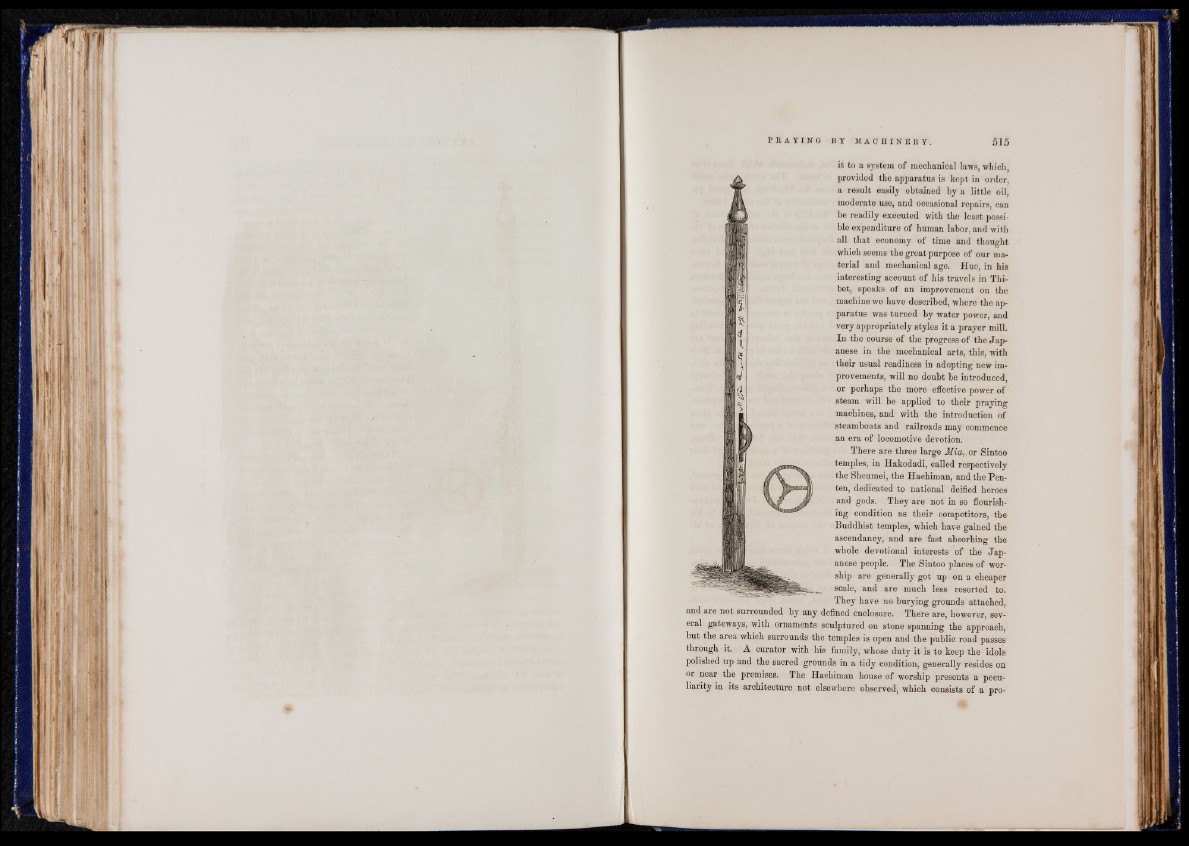
It! IP
y
R i W) ml
i t s ™
PHI
II
1 1
\ \
it to a system of mechanical laws, which
provided the apparatus is kept in order,
a result easily obtained by a little oil,
moderate use, and occasional repairs, can
be readily executed with the least possible
expenditure of human labor, and with
all that economy of time and thought
which seems the great purpose of our ma-
terial and mechanical age. Hue, in his
interesting account of his travels in Thibet,
speaks of an improvement on the
machine we have described, where the apparatus
was turned by water power, and
very appropriately styles it a prayer mill.
In the course of the progress of the Japanese
in the mechanical arts, this, with
their usual readiness in adopting new improvements,
will no doubt be introduced,
or perhaps the more effective power of
steam will be applied to their praying
machines, and with the introduction of
steamboats and railroads may commence
an era of locomotive devotion.
There are three large Mia,,or Sintoo
temples, in Hakodadi, called respectively
the Sheumei, the Hachiman, and the Pen-
ten, dedicated to national deified heroes
and gods. They are not in so flourishing
condition as their competitors, the
Buddhist temples, which have gained the
ascendancy, and are fast absorbing the
whole devotional interests of the Japanese
people. The Sintoo places of worship
are generally got up on a cheaper
scale, and are much less resorted to.
They have no burying grounds attached,
and are not surrounded by any defined enclosure. There are, however, several
gateways, with ornaments sculptured on stone spanning the approach,
but the area which surrounds the temples is open and the public road passes
through it. A curator with his family, whose duty it is to keep the idols
polished up and the sacred grounds in a tidy condition, generally resides on
or near the premises. The Hachiman house of worship presents a peculiarity
in its architecture not elsewhere observed, which consists of a pro